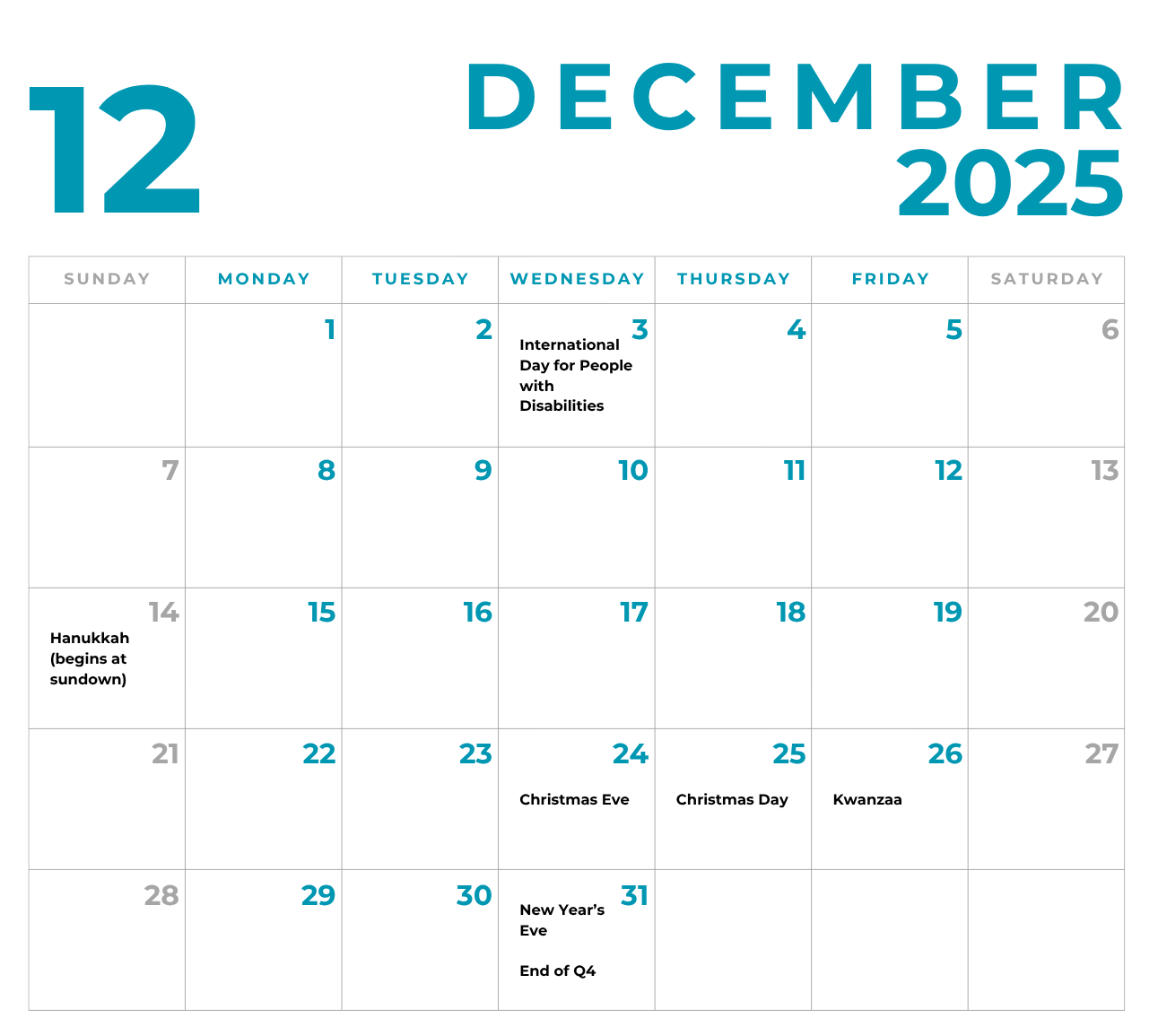
Author: hrsynergy
Recent Employer Communications

Check out our recent blogs:
- Your 2026 Contribution & Savings Limits: Quick Reference Guide
- SECURE 2.0: What Plan Sponsors Need to Know About Upcoming Roth Catch-Up Rules
- Using AI in the Workplace: Why Employers Need Clear Policies, Procedures & Training
- New Hampshire Employers: Prepare Now for New Unpaid Parental Leave Law
- 2026 HR & Business Compliance: New England Edition
- Military-Related Work Leave Hits Highest Rates Since 2006: What Employers Should Know Under USERRA
- White House Announces Dramatic H-1B Fee Hike: What Employers Need to Know
- 2026 HR & Business Compliance: What You Need to Know
- The Massachusetts Pay Transparency Law
- Why Onboarding Matters for Small Businesses and Nonprofits — And the Risks of Skipping Documentation
Don’t Forget Your 2025 FSA Funds — You May Still Be Able to Use Them!

As we begin 2026, we want to remind everyone who participated in a 2025 Flexible Spending Account (FSA) or Dependent Care FSA that you may still have time to use any remaining funds from last year.
Depending on your plan’s rules, unspent 2025 FSA funds may still be available through a Grace Period or Carryover.
We encourage you to:
- Check your current FSA balance
- Review eligible expenses
- Submit claims promptly to avoid forfeiting unused funds
A quick check of your account now can help you avoid losing unused dollars.
Deadlines, Reminders and TO-DOs
- W-2s and 1099-NEC must be distributed to Employees and Independent Contractors by January 31st.
- Watch for notices of rate changes in your state unemployment taxes. Any changes in these rates need to be updated with your payroll administrator for proper tax filings.
- Remind employees to check their beneficiary designations for life insurance and 401k to make sure they are up do date.
- ACA Reporting Deadlines for Forms 1094-C, 1095-C (employers) and 1094-B, 1095-B (insurers/self-insured plans):
- Distribute to Employees / Covered Individuals:
- Form 1095-B / 1095-C (recipient copies): due March 2, 2026 (or the next business day if March 2 falls on a weekend/holiday).
- File With the IRS:
- Paper filing: by March 2, 2026 (for those eligible to paper file.
- Electronic filing: by March 31, 2026 (required if filing 10 or more returns).
Need help staying on track? Contact [email protected].
Welcome to 2026: A Year of Big Shifts in HR & Workplace Compliance

Happy New Year! As businesses across New England and beyond gear up for 2026, we are entering one of the most significant seasons of regulatory change in recent years. From wage increases and paid leave expansions to new artificial intelligence guardrails and evolving employee relations dynamics, HR leaders must start the year informed and prepared.
Below is your comprehensive guide to the most important updates taking effect this January, as well as what you can do to stay ahead.
Minimum Wage Changes in New England and Several Other States
- Connecticut’s minimum wage will rise from $16.35 to $16.94, making it one of the highest in the country.
- Maine’s state minimum wage increases to $15.10/hour (now covering agricultural workers as well).
- Rhode Island’s rate will be $16.00/hour and Vermont’s $14.42/hour in 2026, while Massachusetts remains at $15.00/hour.
- New Hampshire still follows the federal floor ($7.25/hour) with no hike scheduled.
New Employment Laws Taking Effect January 1, 2026
- States nationwide are rolling out minimum wage adjustments, new paid leave programs, AI guardrails, and expanded worker protections.
- Employers should review all state-level changes to update handbooks, payroll systems, and leave policies before January
Pay Transparency Requirements
- Massachusetts’ pay transparency law took effect October 29, 2025, requiring employers with 25+ employees to include salary ranges in job postings and provide them to applicants or current employees upon request.
- This aligns with broader trends in states expanding salary range disclosures and prohibiting wage-history inquiries.
Paid Leave & Policy Expansion
- Paid sick leave and family leave requirements continue to expand into 2026
- Employers must ensure:
- Leave policies are current
- Handbook language is consistent
- Managers understand eligibility and administration rules
AI, Data Privacy & Arbitration Updates
- New rules increase oversight of AI tools used in hiring, performance, and termination decisions
- Arbitration agreements must include:
- Clear language
- Confirmed employee consent
- Transparent procedures and cost terms
- States are strengthening data privacy requirements for employee records
January Action Items for Employers
- Review minimum wage rates and compensation structures
- Audit job postings for pay transparency compliance
- Update handbooks, arbitration agreements, and leave policies
- Train managers on 2026 employee relations and compliance risks
January is one of the busiest months for HR compliance and strategic planning. If you would like help reviewing your handbook, completing a compensation analysis, updating job descriptions, or preparing for new 2026 legal requirements, HR Synergy is ready.
Let’s make 2026 your most compliant and productive year yet!
December 2025 Calendar

Recent Employer Communications

Check out our recent blogs:
- New Hampshire Employers: Prepare Now for New Unpaid Parental Leave Law
- 2026 HR & Business Compliance: New England Edition
- Military-Related Work Leave Hits Highest Rates Since 2006: What Employers Should Know Under USERRA
- White House Announces Dramatic H-1B Fee Hike: What Employers Need to Know
- 2026 HR & Business Compliance: What You Need to Know
- The Massachusetts Pay Transparency Law
- Why Onboarding Matters for Small Businesses and Nonprofits — And the Risks of Skipping Documentation
- I-9 Basics
- Understanding Workers’ Comp Codes for Remote Employees: What Small Businesses Need to Know
- Resolve Wage & Hour Issues Without the Headache: How Small Businesses Can Benefit from the PAID Program
Your 2026 Contribution & Savings Limits: Quick Reference Guide

SECURE 2.0: What Plan Sponsors Need to Know About Upcoming Roth Catch-Up Rules

We want to inform you about an important change to retirement plan catch-up contributions that will take effect on January 1, 2026, as part of the SECURE 2.0 Act.
What’s Changing?
Beginning in 2026, participants that are age 50 or older and earned more than $145,000 in FICA wages in the previous calendar year will be required to make any catch-up contributions as Roth (after-tax) contributions. This rule applies to all 401(k), 403(b), and governmental 457(b) plans.
Key Details:
- FICA wages include salary, tips, bonuses, commissions, and taxable fringe benefits (Box 3 on your W-2).
- The $145,000 threshold is indexed annually for inflation.
- If your plan does not offer Roth contributions, plan participants will not be able/eligible to make catch-up contributions if they exceed the wage threshold.
- New limits for ages 60–63: Starting in 2025, participants in this age group may contribute an additional $3,750 super catch up contribution (indexed), which must also be Roth if the wage threshold is met.
What You Need to Do:
- Ensure your plan offers a Roth contribution option.
- Coordinate with payroll providers and the plan’s record keeper to identify impacted participants and adjust contribution processing.
- Review your employees’ 2025 earnings to determine which participants may be impacted.
- Check your plan’s salary deferral election options and help any impacted participants update their elections if necessary.
- Have participants contact the plan’s financial professional to understand how Roth contributions may affect their retirement strategy.
- Educate employees about the upcoming changes and provide support for updating elections.
Changes for Long-Term Part-Time Participants:
- Effective January 1, 2025, LTPT employees must have worked at least 500 hours in each of two consecutive 12-month periods.
- Employees must be 21 years of age or older.
- Service prior to January 1, 2021 (for 401(k) plans) and January 1, 2023 (for 403(b) plans) is excluded from eligibility and vesting calculations.
- These changes are designed to expand retirement savings opportunities for part-time workers who have demonstrated long-term commitment to their employers.
What LTPT Employees Are Eligible For:
- Elective salary deferrals to the retirement plan.
- Employer contributions (matching or non-elective) are optional and at the discretion of the plan sponsor.
- Vesting begins once the employee satisfies the LTPT eligibility criteria, with one year of vesting credit for each year of 500+ hours of service.
Plan Sponsor Considerations:
- Track hours accurately for part-time employees to determine eligibility.
- Decide whether to include LTPT employees in employer contributions and nondiscrimination testing.
Reach out to us at [email protected] to learn more.
Using AI in the Workplace: Why Employers Need Clear Policies, Procedures & Training

Policies, Procedures & Appropriate Use
- Employers should establish a formal AI policy outlining approved tools, acceptable use, and consequences for misuse.
- Amazon now requires some employees to demonstrate AI use to qualify for promotions, showing how quickly expectations around AI are evolving.
- Policies should also explain when AI is appropriate (drafting communications, summarizing information, creating first drafts, etc.) and when it isn’t, such as making final hiring decisions or handling confidential or sensitive data.
- With 42% of workers using AI secretly (“shadow AI”), unclear policies often push employees toward unmonitored usage.
- Mandatory human review of all AI-generated content, especially for sensitive or business-critical areas should be implemented as part of these policies.
Training, Responsible Use & Data Restrictions
- Employees must be trained on how AI works, where it’s reliable, its limitations, and potential accuracy or bias concerns.
- The U.S. Department of Labor recommends training employees to ensure AI is deployed safely and equitably at work.
- Accenture’s CEO reinforces that AI adoption must be paired with strong governance and ongoing employee training.
- Policies should explicitly prohibit entering proprietary, personal, financial, or customer information into public AI tools unless approved.
- Many organizations ban uploading confidential information into open AI platforms to prevent privacy or compliance risks.
Approved Platforms & Security Oversight
- Employers should clearly define which AI tools are approved, and set a review process for requesting new platforms.
- Best practices include choosing vendors that do not use company input data to train public models.
- IT and cybersecurity teams must vet AI systems for data retention, privacy practices, and overall security before approval.
- Real-world guidance emphasizes the need for regular audits and security reviews to ensure platforms remain compliant.
Moving Forward Responsibly
As AI becomes a standard workplace tool, responsible implementation is no longer optional, but strategic. Organizations that set clear expectations, provide effective training, and invest in secure, vetted AI systems will mitigate risk while empowering employees to work smarter and more efficiently. Thoughtful policies today lay the foundation for safe, ethical, and innovative use of AI tomorrow.
To learn more or get help developing a customized workplace AI policy, contact [email protected].
November 2025 Calendar

